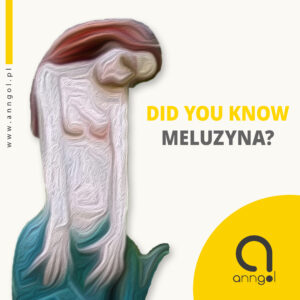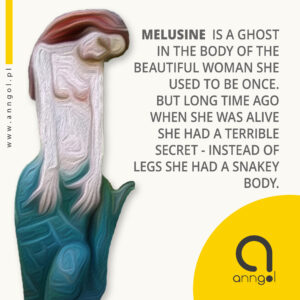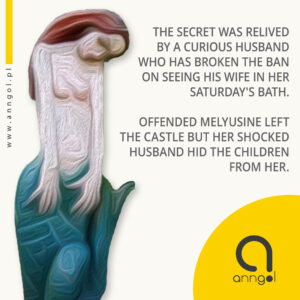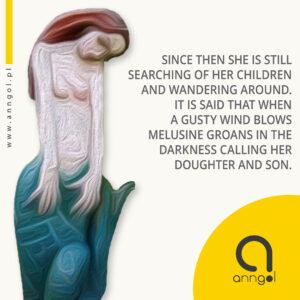MELUZYNA – I Love Silesia No.3
PL: „Nie podłaź do pieca, bo tam wyje Meluzyna i cię wciągnie” mawiał mój Tato, chcąc ustrzec mnie od poparzenia.
Meluzynę przed wiekami nietrudno było spotkać. Wisiała często nad stołem w jadalni, zdarzało się, że stała na eksponowanym miejscu gdzieś w komnacie czy w kościele. Nazwą taką określano bowiem świecznik – niezależnie od tego, czy zdobiła go tajemnicza kobieca figurka, czy też nie.
Gustaw Morcinek nazywa ją panną morską pojawiającą się nad światem w jesiennej porze, zawodzącą rozpaczliwie w strugach ulewy i poszukującą swoich dzieci.
Miłość, sekret i klątwa to esencja tej legendy. Piękny demon zrodzony z tęsknoty, kojarzony z wiatrem, nadciągającą burzą i przeciągami.
Ale wersji legendy jest wiele. Skup się ANGLONINJO i przeczytaj tą, którą my znamy. Let’s do this!
GB: „Don’t go near the stove – that’s where Melusine howls, and she might drag you in,” my Dad used to say, trying to keep me safe from getting burned.
Long ago, it wasn’t hard to encounter Melusine.
She often hung above the dining table, and sometimes stood in a prominent place in a chamber or even a church.
The name “Melusine” was once used to describe a chandelier, whether or not it featured a mysterious female figure.
Gustaw Morcinek described her as a sea maiden appearing in autumn skies — weeping in the pouring rain, searching for her lost children.
Love, secrecy, and a curse — this is the essence of the legend.
A beautiful demon, born of longing, connected to wind, incoming storms, and eerie drafts through old hallways.
But as always, legends have many faces.
Focus now, AnnGolNinja, and read the version we know. Let’s do this!




